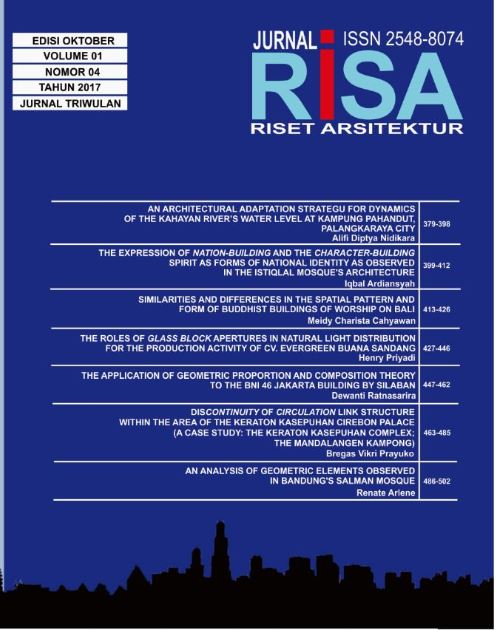AN ANALYSIS OF GEOMETRIC ELEMENTS OBSERVED IN BANDUNG’S SALMAN MOSQUE
DOI:
https://doi.org/10.26593/risa.v1i04.2757.486-502Abstract
Abstract- The Salman Mosque was constructed in the era of modern architecture guided by geometric elements. Geometric elements enable architects to easily design with accurate measurement. These geometric elements were applied to the Salman Mosque by Achmad Noe’man. The applications of these geometric elements were made to the roof, walls and floor of the Salman Mosque building. The purpose of this paper is study the aspects of geometric elements within this research. The other purpose is to study the application of geometric elements to the Salman Mosque in Bandung. The theories behind this research are the ones concerning geometric elements, modern types of architecture, Mosque architecture, structuring principles, and archetypes. The method used to conduct the research is the research object analysis, in this case of theSalman Mosque. This paper discusses the background, formulation of the problem, purpose, utility, method, theoretical study, object data and research object analysis, as well as the ultimate research conclusion and suggestion. The benefits of the research outcome that can be derived from this research study are yielding knowledge concerning the application of geometric elements to a Mosque building in Indonesia as well as producing recommendations for the design of geometric elements in Indonesia.
Keywords: geometric elements; roof, wall, and floor; Salman Mosque Bandung












